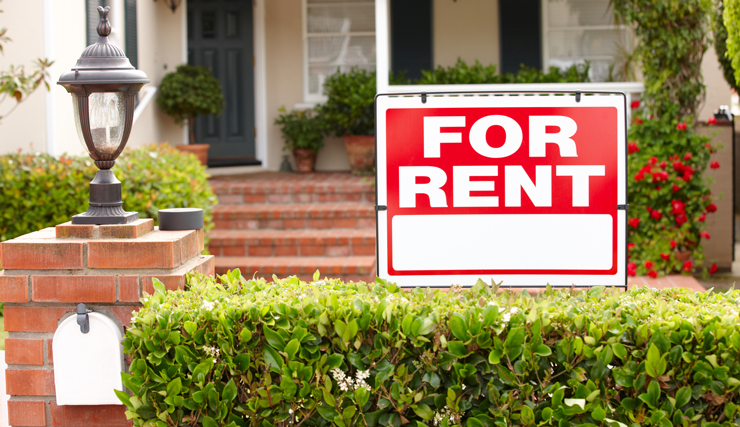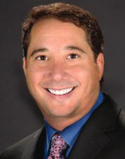Improper Hard Flooring Not Protected by Selective Enforcement or Waiver of Defenses
It is not uncommon for an association to have flooring restrictions to protect downstairs unit owners from excessive noise. Can a unit owner claim selective enforcement if an association only seeks to enforce the rules against the upstairs unit owners? What if the association’s president says it is “ok?” Maybe the flooring will still have to be ripped up!
In a case hot off the presses, a Florida appellate court just concluded that an association did not selectively enforce or waive its flooring restriction. In Laguna Tropical v. Barnave, No. 3D16-1531 (Fla. 3rd DCA, January 25, 2017), a unit owner replaced her carpeting with laminate flooring. The following year, the resident below the owners’ second story unit complained about noise and asked the association to enforce the Declaration, which prohibited an owner from altering, modifying, or replacing the interior of a unit without the consent of the association and to enforce a rule providing that only carpeting shall be installed in the units.
Following an unsuccessful arbitration effort, the association filed suit against the owner to enforce the flooring restrictions. The trial court agreed with the owner’s defense of selective enforcement and granted judgment for the owner.
The Florida appellate court reversed the judgment and returned the case to the trial court for enforcement of the Declaration against the owner. The court noted that of the condominium’s 94 units, 11 were only upstairs units, 11 were downstairs units, and the remaining 72 units included first and second floor space within the same unit. The configuration was important to the selective enforcement defense because owners of two story units who installed hard flooring upstairs would not have complained about their own flooring.
Although the owner argued that the association only enforced the flooring restriction against 11 of the units, the appellate court noted that these 11 units were exclusively upstairs units. There was no evidence that occupants of the 72 upstairs-downstairs units ever complained to the association about the noise. There were only a “handful” of noise complaints by downstairs-only owners that led to successful enforcement by the association, which included either replacing the tile or wood flooring. Additionally, the court commented that there was no evidence that the association refused to enforce a noise complaint regarding a downstairs-only unit.
“In the present case, the prohibition on floor coverings other than padded carpet is plainly intended to avoid noise complaints,” the court stated. The court concluded that no selective enforcement was proven since there were no complaints regarding any units except for units like the owner’s second-floor unit.
In a second issue, the owner alleged that the association’s president e-mailed that it was ok to install the flooring. The court determined that the owner could not reasonably rely on the president’s e-mails. Why? Because the Declaration required alterations to be approved by the board of directors, no one officer could provide the approval.
This decision should help Florida community associations. To begin with, the case reinforces that owners have to prove their defenses. Second, it appears that for restrictions that protect neighboring owners from nuisances such as noise, if there is no complaint, then the association may not have to enforce the rule. Third, at least under these facts, there is a limit to owner reliance on unauthorized e-mails. However, it would appear that the selective enforcement holding is limited to those rules that protect others and may not apply to general restrictions that impact the community at large such as those rules regarding uniform appearance.
Death Liability in Suit Despite Employer’s Workers’ Compensation Coverage
Taking inconsistent positions or even making unclear statements after a claim was filed, may curtail a Florida association’s defense in a lawsuit. The facts in Gil v. Tenet Healthsystem North Shore, Inc., 41 Fla. L. Weekly D 2567 (Fla. 4th DCA, November 2016) arose in a hospital but could just have easily occurred in a Florida community association.
Rafael Gil apparently was exposed to hazardous materials while working as a carpenter for North Shore Medical Center. After Gil died, his wife filed a claim with the hospital for workers’ compensation benefits. The hospital denied her claim on the basis that Mr. Gil’s employment was not the “major contributing cause for his death.”
Mr. Gil’s wife then filed a wrongful death action against his employer, the hospital. The hospital maintained that no lawsuit could be filed because Mr. Gil’s wife’s exclusive remedy was through the workers’ compensation process. The lower court agreed and granted summary judgment for the hospital.
The Florida appellate court disagreed, reversing the decision of the trial court. The appellate court explained that if an employer claims that an employee is not entitled to workers’ compensation benefits because “the injury did not occur in the course and scope of employment, or that there was no employment relationship” the employer cannot claim immunity on the grounds that “the worker’s exclusive remedy was workers’ compensation.” The issue in this case was whether the hospital took inconsistent positions.
The court pointed out that the language used by the hospital in its notice to Mr. Gil’s wife regarding the denial of benefits was ambiguous. Therefore, there was a factual issue of whether the hospital was prevented from claiming immunity from a lawsuit.
“In the present case, if the hospital merely intended to allege the medical causation defense, it did not do so clearly,” the court explained. “Here, the notice of denial did not indicate there was a compensable injury, and instead generally provided that the entire claim [was] denied because claimant’s ‘employment’ was not the major contributing cause for his death”
The lesson to be learned is that in trying to avoid responsibility for insurance claims in the short run may not work in the long run. As soon as an association receives a claim, you should contact your association’s attorney and if there is an employee claim of injury then normally also contact your worker’s compensation carrier. This case also serves to remind associations to take care drafting contracts to properly address insurance requirements, not just assuming coverage exists “because it should.”
Get Ready, Get Set, Do Not Go!
The Florida Legislature Readies for 2017
It is time to gird for battle! Legislators and lobbyists are flooding into Tallahassee. The state is in a state!
At this time of year Florida community associations and their members warily watch for new legislative initiatives. It is too early to anticipate what, if any proposals that affect community associations will become law. Nevertheless, in advance of the March call to order for the Florida legislative session, legislative committees are scheduling and holding hearings.
Issues of all types are being pursued—HOA regulation, confirming condominium sprinkler retrofit requirements and providing for some extensions, and setting requirements for estoppel letters.
Bills that could affect Florida community associations if they become law include the following (“HB” means House Bill; “SB” means Senate Bill):
Homeowners Associations. HB135. For communities containing 7,500 or more parcels, election procedures are sought to be changed.
Homeowners Associations. HB137 would require disputes concerning many homeowners’ association issues to be sent to the Division of Condominiums pre-suit binding arbitration program.
Vacation Rentals. SB188, HB425, HB603 seek to prevent counties and municipalities from regulating “vacation rental.”
HOA Regulation. HB295 seeks to extend the Division of Condominiums, Time Shares, and Mobile Homes jurisdiction to include homeowners’ associations for arbitration of administrative issues including records inspections and allowing the levy of damages for delays in production.
MRTA. SB318 seeks to revise the Marketable Record Title Act to except
homeowners’ associations from the law extinguishing covenants.
Estoppel Letters. SB318, SB398, and HB433 seek to address the timing to provide, the effectiveness of, and charges for estoppel letters, including requiring letters being issued within ten days of the receipt of a request, and allowing requests by e-mail.
Claims. HB377 and SB 204 seek to limit the statute of limitations, the time period in which claims can be brought, against architects and professional engineers.
Community and Cooperative Associations [bill number pending] seeks to clarify retention of official records, limiting the requirement to hold bids to one year, expanding election records to be obtained to include electronic records and for condominiums to clarify that records are to be provided within ten working days, rather than five. For condominiums extending the time for sprinkler retrofit opt-out and to reinforce that buildings under 75 feet or less are not required to take an opt-out vote. Bulk buyer exemptions are extended indefinitely.
Construction. It is rumored that two bills are in drafting to clarify and improve the process for notifying contractors of construction information to reduce the potential of contractor liens.
Keep “tuned in” for more information as it arrives.
Michael J. Gelfand, Esq., Senior Partner of Gelfand & Apre, P.A.
 Michael J. Gelfand, the Senior Partner of Gelfand & Arpe, P.A., emphasizes a community association law practice, counseling associations and owners how to set legitimate goals and effectively achieve those goals. Gelfand is a Florida Bar Board-Certified Real Estate Lawyer, Certified Circuit and County Civil Court Mediator, Homeowners Association Mediator, an Arbitrator, and Parliamentarian. He is the Chair of the Real Property Division of the Florida Bar’s Real Property, Probate & Trust Law Section, and a Fellow of the American College of Real Estate Lawyers. Contact him at michael@flcaj.com or (561) 655-6224.
Michael J. Gelfand, the Senior Partner of Gelfand & Arpe, P.A., emphasizes a community association law practice, counseling associations and owners how to set legitimate goals and effectively achieve those goals. Gelfand is a Florida Bar Board-Certified Real Estate Lawyer, Certified Circuit and County Civil Court Mediator, Homeowners Association Mediator, an Arbitrator, and Parliamentarian. He is the Chair of the Real Property Division of the Florida Bar’s Real Property, Probate & Trust Law Section, and a Fellow of the American College of Real Estate Lawyers. Contact him at michael@flcaj.com or (561) 655-6224.




 David G. Muller
David G. Muller









 David B. Haber is the founding partner with Haber Slade P.A. Haber’s practice includes community association law, real estate, construction, and commercial litigation, and aviation law. His e-mail is dhaber@dhaberlaw.com. Jonathan S. Goldstein is a senior associate attorney with Haber Slade P.A. Goldstein’s practice includes community association law, real estate, construction, and commercial litigation. His e-mail is jgoldstein@dhaberlaw.com. Alexander G. Leon is an associate attorney with Haber Slade P.A. Leon’s practice includes community association law, real estate, construction, and commercial litigation. His e-mail is aleon@dhaberlaw.com. This article is for informational purposes and should not be taken as legal advice.
David B. Haber is the founding partner with Haber Slade P.A. Haber’s practice includes community association law, real estate, construction, and commercial litigation, and aviation law. His e-mail is dhaber@dhaberlaw.com. Jonathan S. Goldstein is a senior associate attorney with Haber Slade P.A. Goldstein’s practice includes community association law, real estate, construction, and commercial litigation. His e-mail is jgoldstein@dhaberlaw.com. Alexander G. Leon is an associate attorney with Haber Slade P.A. Leon’s practice includes community association law, real estate, construction, and commercial litigation. His e-mail is aleon@dhaberlaw.com. This article is for informational purposes and should not be taken as legal advice. 
 Michael J. Gelfand, the Senior Partner of Gelfand & Arpe, P.A., emphasizes a community association law practice, counseling associations and owners how to set legitimate goals and effectively achieve those goals. Gelfand is a Florida Bar Board-Certified Real Estate Lawyer, Certified Circuit and County Civil Court Mediator, Homeowners Association Mediator, an Arbitrator, and Parliamentarian. He is the Chair of the Real Property Division of the Florida Bar’s Real Property, Probate & Trust Law Section, and a Fellow of the American College of Real Estate Lawyers. Contact him at
Michael J. Gelfand, the Senior Partner of Gelfand & Arpe, P.A., emphasizes a community association law practice, counseling associations and owners how to set legitimate goals and effectively achieve those goals. Gelfand is a Florida Bar Board-Certified Real Estate Lawyer, Certified Circuit and County Civil Court Mediator, Homeowners Association Mediator, an Arbitrator, and Parliamentarian. He is the Chair of the Real Property Division of the Florida Bar’s Real Property, Probate & Trust Law Section, and a Fellow of the American College of Real Estate Lawyers. Contact him at 
 Alan Garfinkel has counseled homeowners, townhomes, condominium associations, and individuals throughout Florida from his same Central Florida office for 25 years. He continues to passionately work for those living in and working for community associations. Garfinkel received the highest ethics rating (AV) for more than a dozen consecutive years. Attorney peer review ratings provide objective grades based on confidential evaluations by attorneys and judges measuring a lawyer’s ethical standards and legal ability. Garfinkel Whynot only represents community associations, not big corporations like developers, banks, and insurance companies that can develop conflicts with communities. For more information, visit
Alan Garfinkel has counseled homeowners, townhomes, condominium associations, and individuals throughout Florida from his same Central Florida office for 25 years. He continues to passionately work for those living in and working for community associations. Garfinkel received the highest ethics rating (AV) for more than a dozen consecutive years. Attorney peer review ratings provide objective grades based on confidential evaluations by attorneys and judges measuring a lawyer’s ethical standards and legal ability. Garfinkel Whynot only represents community associations, not big corporations like developers, banks, and insurance companies that can develop conflicts with communities. For more information, visit 
